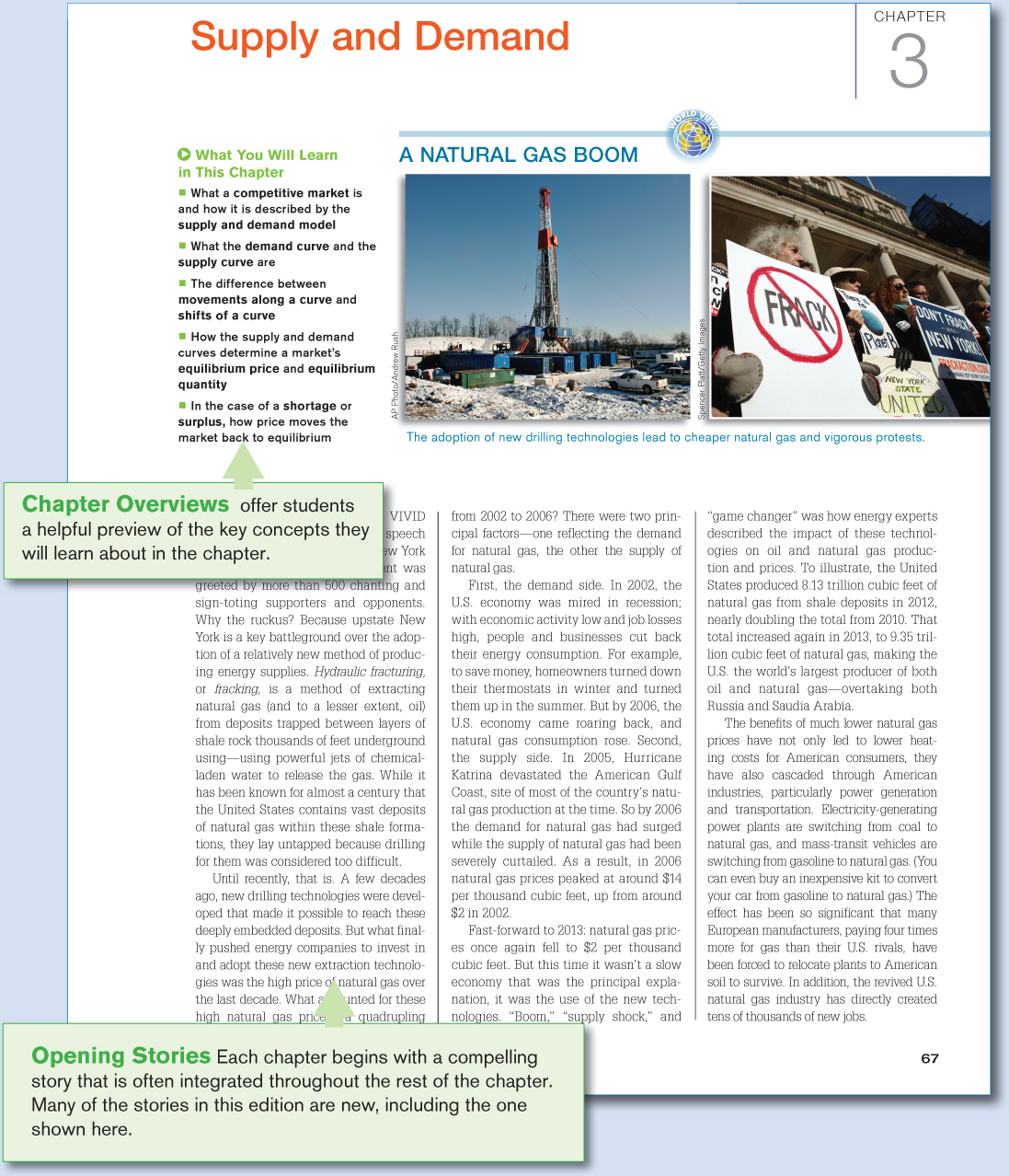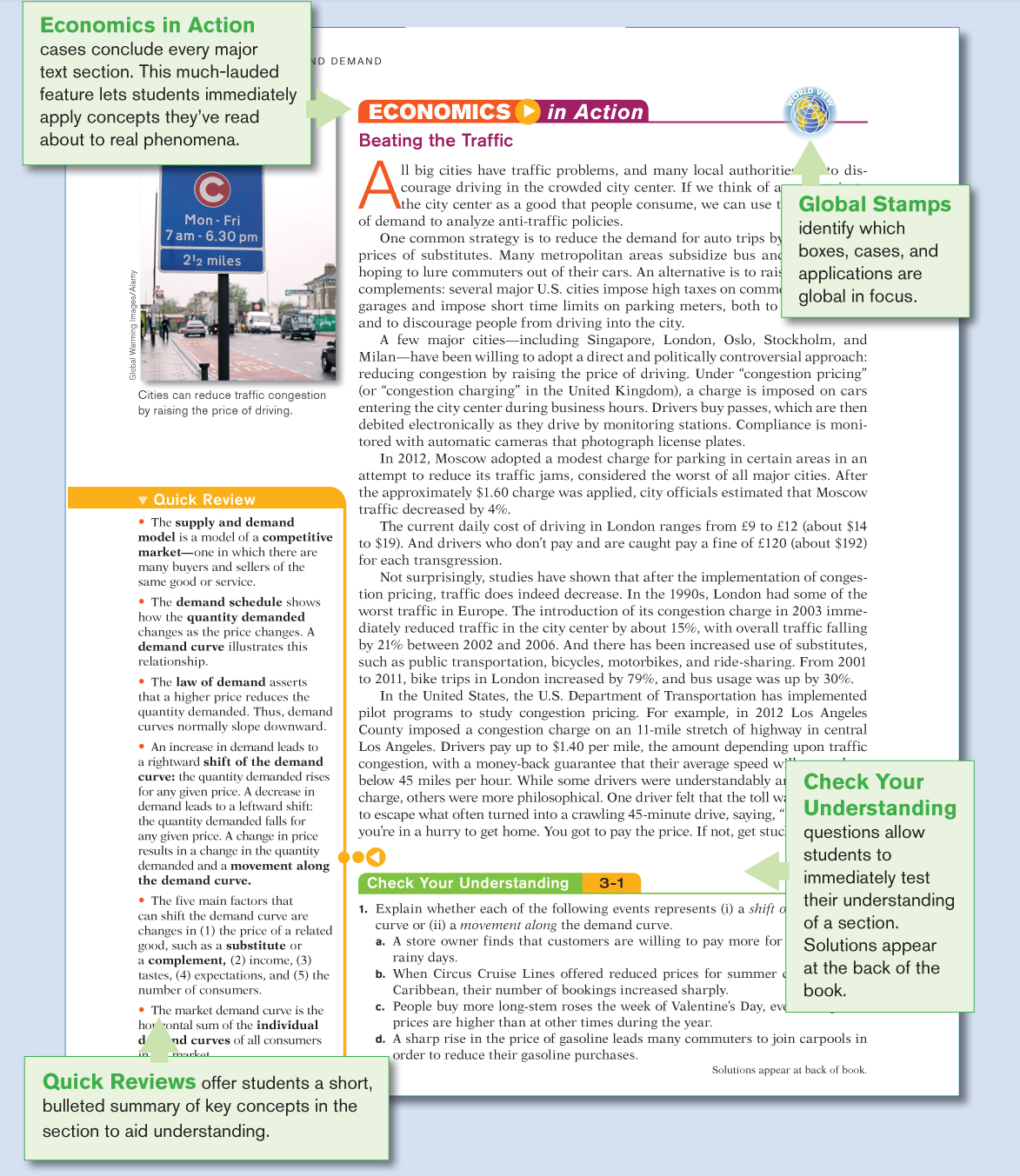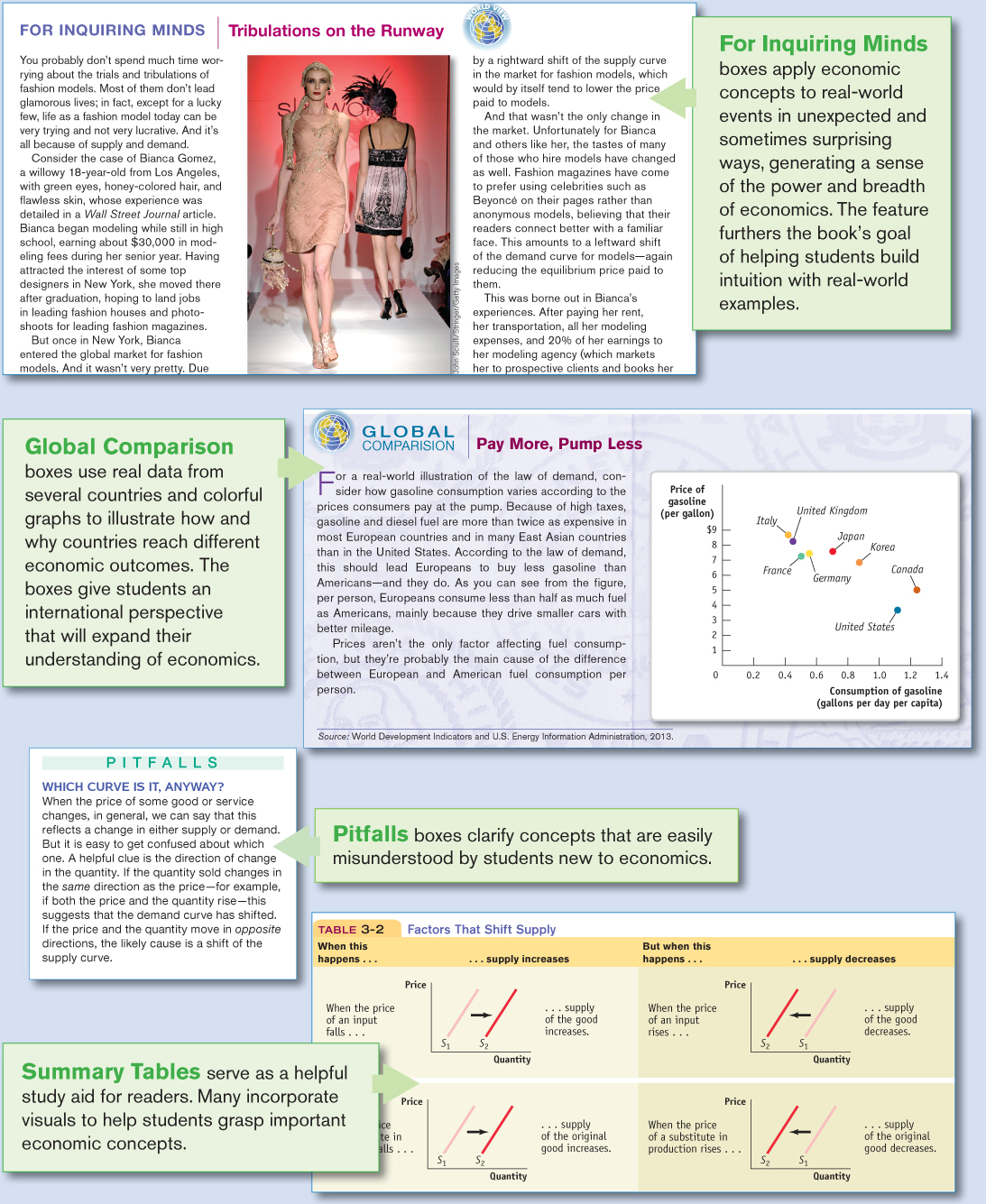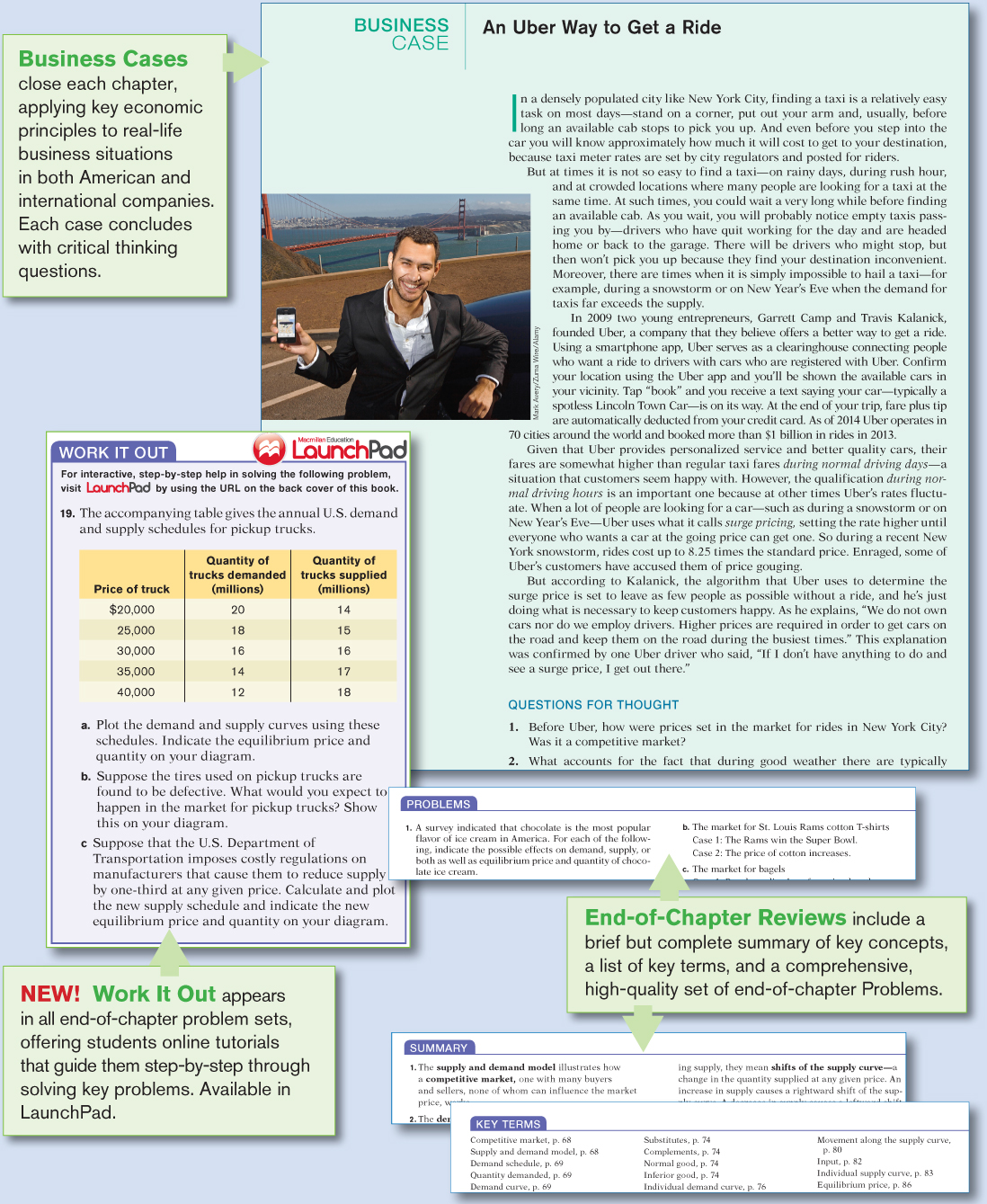|
|
|
|
Introduction: The Ordinary Business of Life
Initiates students into the study of economics with basic terms and explains the difference between microeconomics and macroeconomics.
|
-
Outlines 12 principles underlying the study of economics: principles of individual choice, interaction between individuals, and economy-wide interaction.
Economic Models: Trade-offs and Trade Employs two economic models—the production possibilities frontier and comparative advantage—as an introduction to gains from trade and international comparisons.
|
|
|
Chapter 2 Appendix: Graphs in Economics
Offers a comprehensive review of graphing and math skills for students who would find a refresher helpful and to prepare them for better economic literacy.
|
-
Covers the essentials of supply, demand, market equilibrium, surplus, and shortage.
Consumer and Producer Surplus Introduces students to market efficiency, the ways markets fail, the role of prices as signals, and property rights. Price Controls and Quotas: Meddling with Markets Covers market interventions and their consequences: price and quantity controls, inefficiency, and deadweight loss. -
Introduces the various elasticity measures and explains how to calculate and interpret them, including price, cross-price and income elasticity of demand, and price elasticity of supply.
-
Covers basic tax analysis along with a review of the burden of taxation and considerations of equity versus efficiency. The structure of taxation, tax policy, and public spending are also introduced.
|
|
|
Here we trace the sources of comparative advantage, consider tariffs and quotas, and explore the politics of trade protection. The chapter includes coverage on the controversy over imports from low-wage countries.
|
Decision Making by Individuals and Firms Microeconomics is a science of how to make decisions. The chapter focuses on marginal analysis (“either–or” and “how much” decisions) and the concept of sunk cost; it also includes a section on behavioral economics, showing the limitations of rational thought. -
Provides a complete treatment of consumer behavior for instructors who don’t cover indifference curves, including the budget line, optimal consumption choice, diminishing marginal utility, and substitution effects.
|
|
|
Chapter 10 Appendix: Consumer Preferences and Consumer Choice
Offers more detailed treatment for those who wish to cover indifference curves.
|
Behind the Supply Curve: Inputs and Costs Develops the production function and the various cost measures of the firm, including discussion of the difference between average cost and marginal cost. Perfect Competition and the Supply Curve Explains the output decision of the perfectly competitive firm, its entry/exit decision, the industry supply curve, and the equilibrium of a perfectly competitive market. -
A complete treatment of monopoly, including topics such as price discrimination and the welfare effects of monopoly.
-
This chapter focuses on defining the concept of oligopoly along with basic game theory in both a one-shot and repeated game context. Coverage of the kinked demand curve now appears online.
Monopolistic Competition and Product Differentiation The chapter emphasizes instances in which students encounter monopolistic competition, covering the entry/exit decision, efficiency considerations, and advertising. -
Significantly revised and updated in the new edition, the chapter covers negative externalities and solutions to them, such as Coasian private trades, emissions taxes, and a system of tradable permits. Also examined are positive externalities, technological spillovers, and network externalities.
Public Goods and Common Resources Explains how to classify goods into four categories (private goods, common resources, public goods, and artificially scarce goods) based on excludability and rivalry in consumption, in the process clarifying why some goods but not others can be efficiently managed by markets.
|
|
|
The Economics of the Welfare State
Significantly revised and updated, this chapter provides a comprehensive overview of the welfare state as well as its philosophical foundations. Examined in the chapter are health care economics (including new coverage of the Affordable Care Act), the problem of poverty, and the issue of income inequality.
Factor Markets and the Distribution of Income and Appendix: Indifference Curve Analysis of Labor Supply
>Covers the efficiency-wage model of the labor market as well as influence of education, discrimination, and market power. The appendix examines the labor-leisure trade-off and the backward bending labor supply curve.
Uncertainty, Risk, and Private Information
This unique, applied chapter explains attitudes toward risk, examines the benefits and limits of diversification, and considers private information, adverse selection, and moral hazard.
|




